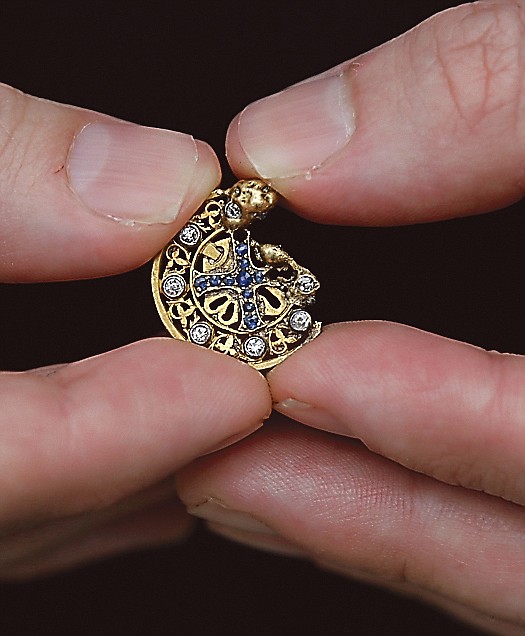MIAMI (AP) - Like most people who signed up for Florida's official Burmese python hunt last winter, Mark Rubinstein slogged a couple times through the Everglades without ever seeing one of the elusive snakes.
Something else caught his eye, though.
In the dirt along a levee, about 10 miles deep into the wetlands, Rubinstein found a gold pendant, with sapphires forming a cross inside a circle of diamonds. One edge of the penny-sized medallion was melted and misshapen.
It may have fallen from the sky. Rubinstein was hunting near the crash sites of two airplanes that went down in the same area: Eastern Flight 401, a New York flight that crashed as it prepared to land in Miami in 1972, and ValuJet Flight 592, a 1996 flight to Atlanta that caught fire shortly after takeoff and plummeted into the remote swamps west of Miami.
Rubinstein hopes to return the jewelry to its rightful owner.
"We've got to get this back to the family, if we can," he said last week.
All 104 passengers and five crew members aboard the ValuJet flight died. The Eastern flight carried 163 passengers and 13 crew members. Seventy-seven people survived, thanks in part to a Homestead man who was catching frogs from his airboat that night. He pulled survivors onto his airboat and turned his headlamp skyward so rescue helicopters could find the crash.
Invasive pythons have been able to disappear into the Everglades for a reason. Sawgrass gets its name from its sharp edges and can grow tall enough to hide predators and any sign of civilization. The wetlands are best traversed by an airboat, and guides warn tourists that anything dropped into the murk is gone for good.
When Rubinstein got the pendant home in February, he dropped it into a jewelry cleaning solution, expecting it to disintegrate. Instead, it became more lustrous and revealed an intricate leaf pattern.
The Coral Springs man, who works at a construction firm, got in touch with the Florida Gold Coast Gem & Mineral Society, which posted his find in an online forum for jewelers. Stephen Walker of Walker Metalsmiths in Andover, N.Y., spotted the post and offered his expertise in Celtic jewelry to Rubinstein.
Walker suspects the pendant belonged to someone aboard the ValuJet flight because Celtic jewelry was scarce in the 1970s and didn't become popular until the 1990s.
The pendant's bright gold color, even where it melted, indicates that it was made from high-carat gold, he said.
"Diamonds will survive anything, and sapphires will, too. These were the ideal materials to survive this. A 14-carat gold would turn into a glob," he said.
Rubinstein also took the pendant to Robert Moorman, owner of Carroll's Jewelers in Fort Lauderdale. Moorman recognized the religious symbolism in the piece, and he determined that it was handmade from 18- or 22-carat gold, probably in the 1800s or late 1700s.
Rubinstein and Moorman have a few strong leads about the pendant's possible owner.
"A perfect situation would be someone saying, "Here's a picture of so-and-so and they're wearing it,' but you don't always get perfect," Rubinstein said.
The damaged piece is not likely worth much on its own. Moorman estimated that the gold could be salvaged for about $150, but the stones likely wouldn't sell in the current market.
If he never finds the rightful owner, Rubinstein plans to give the pendant to a museum or the Archdiocese of Miami.
"It didn't belong out there. It doesn't necessarily belong to me," Rubinstein said.

